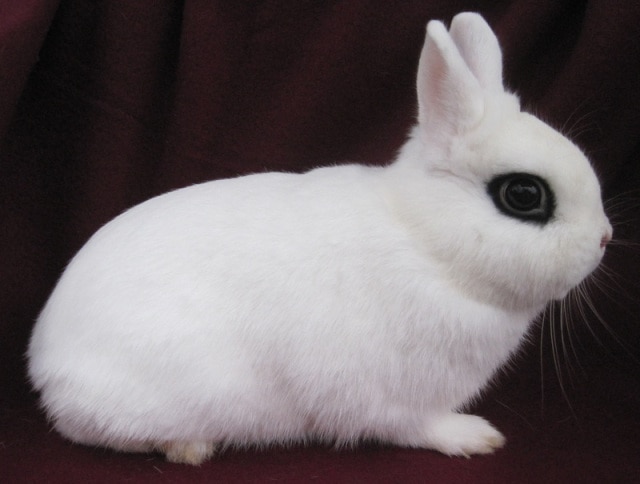Type the name of the breed you're looking for below
[wpdreams_ajaxsearchlite] Don't see the breed your're looking for? Click here and let us know!
Breed Characteristics
1 paw - breed exhibits the least amount of this characteristic
5 paws - breed exhibits most amount of this characteristic
Dwarf Hotot
| Origin | The Dwarf Hotot is one of the more recent breeds to be recognized by the ARBA, gaining acceptance in 1984. It has never been without a strong following, but also has never been among the most popular breeds. There’s an unusual story behind this breed’s development. The much larger Blanc de Hotot was produced in the early 1900s in an effort to produce a black-eyed white rabbit for meat and fur. In that era, large rabbits were valued for their commercial value. But in later years, big bunnies went out of style and people started pursuing dwarf breeds. In the 1970s, one breeder in East Germany and one in West Germany started working on a Dwarf Hotot, completely independent of one another. One crossed a REW Netherland Dwarf to a Blanc de Hotot; the other didn’t use a standard Hotot at all, but crossed a black Netherland Dwarf to a Dutch and bred out markings until only the eyebands remained. The two strains were eventually united to produce the breed we know today. This “eye of the fancy” is of compact type and has a gentle rollback coat. Unlike the Polish, which as similar body type, the shoulders are supposed to be as wide as the hips, and not show any taper. The head set is not as high on the shoulders as that of a Netherland Dwarf, but should not rest on the table either. The head is bold and broad. Ears are carried in an upright V shape, and are disqualified if over 2 ¾ inches in length. The eyes are encircled with narrow bands of coloured fur. Ideal eyeband width equals the thickness of two pennies, and the bands of colour are even all around the eye. Weak or streaky eyebands are faulted, but a complete break in the band is disqualified. For many years, the only accepted variety was white with black eyebands. In the year 2006, chocolate banded Dwarf Hotots were accepted by the ARBA. The black and chocolate banded bunnies are shown together, but the colour must be specified on the registration forms. Blue-band Dwarf Hotots have also been in development, but are not very near acceptance at this time. |
Physical Attributes
| Weight | 3 lbs. Maximum |
| Ear Type | Erect |
| Fur Type | Rollback |
| Colours | A pure white coat, except for the “eyeliner.” |
| Appearance | They have compact, rounded bodies and short, upright ears. |
| Other Considerations | Life Expectancy: 5-10 years Temperament: High strung, but calmer if handled often. Temperaments can range from outgoing to moody, but as a rule they are friendly rabbits and well suited to a pet life. |
| Best Kept In | Pen. Cage or Yard. |



